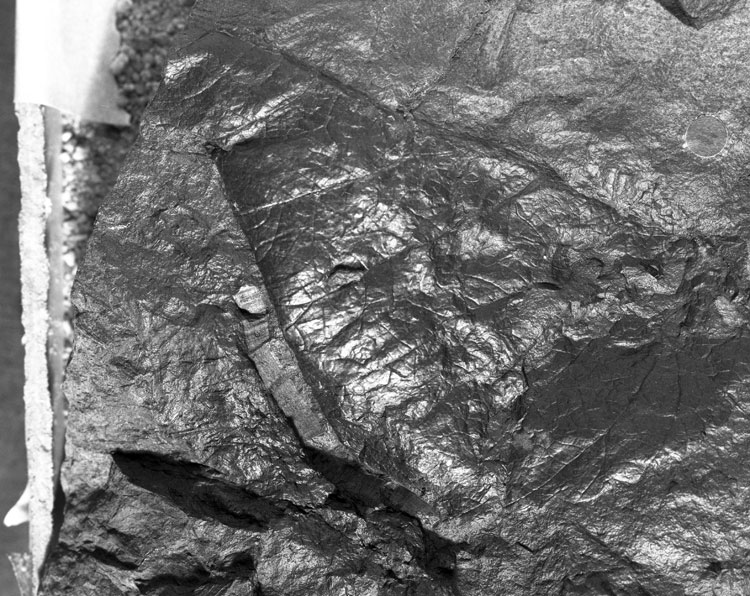Locality
USGS11475
69.716° -143.408°
Demarcation Point
Plant fossils were collected from a iron-rich (sideritic) indurated layer within a gray clay on the east bank of the tributary of the Jago River. This locality is equivalent to Detterman 300P.
Description
Leaf: simple; symmetrical (?); very wide ovate; apex missing; base cordate (?); margin obscure, probably toothed; venation imperfect actinodromous; primary midvein straight, moderate; pectinals weak, curved, departing the midvein almost at right angles; pectinal abmedials departing at 40°, curved, branched; superior secondaries moderate, given off from midvein at angles of 60-90°, slightly curved, branched, greater than 7 pairs; tertiaries transverse, convex, forked, forming acute angles with secondaries; fourth order veins transverse, straight or sinuous, orthogonal.
Remarks
Although poorly preserved and incomplete, this specimen exhibits features commonly found in the hamamelids. The tertiaries are not arranged concentrically about leaf base which is a feature of the palmate dilleniids. Of the published forms it perhaps represents 'Viburnum' nordenskioldi as illustrated in Hollick (1936; Plate 107, Fig. 1; p. 167) which is a widespread Tertiary arctic species.
